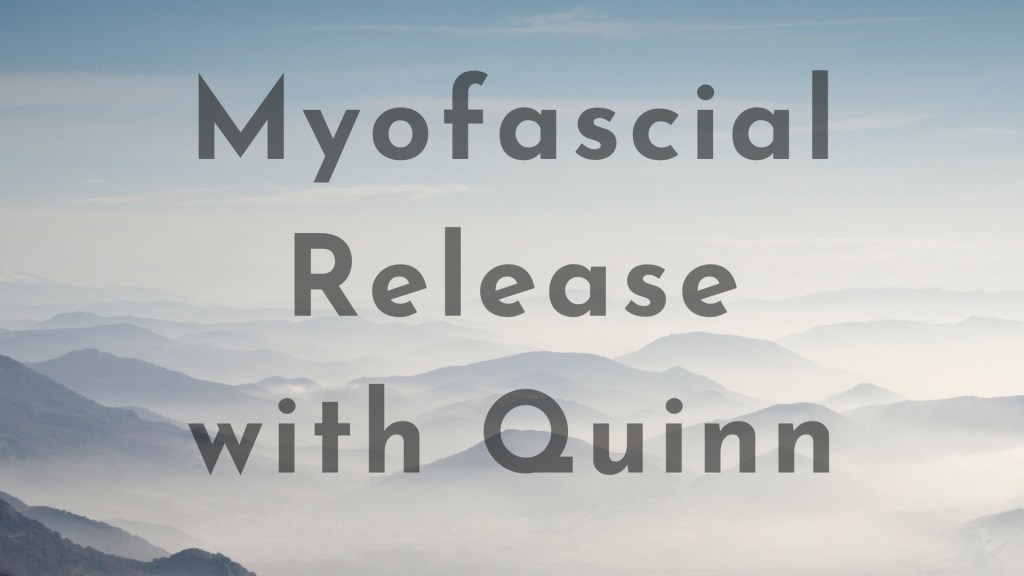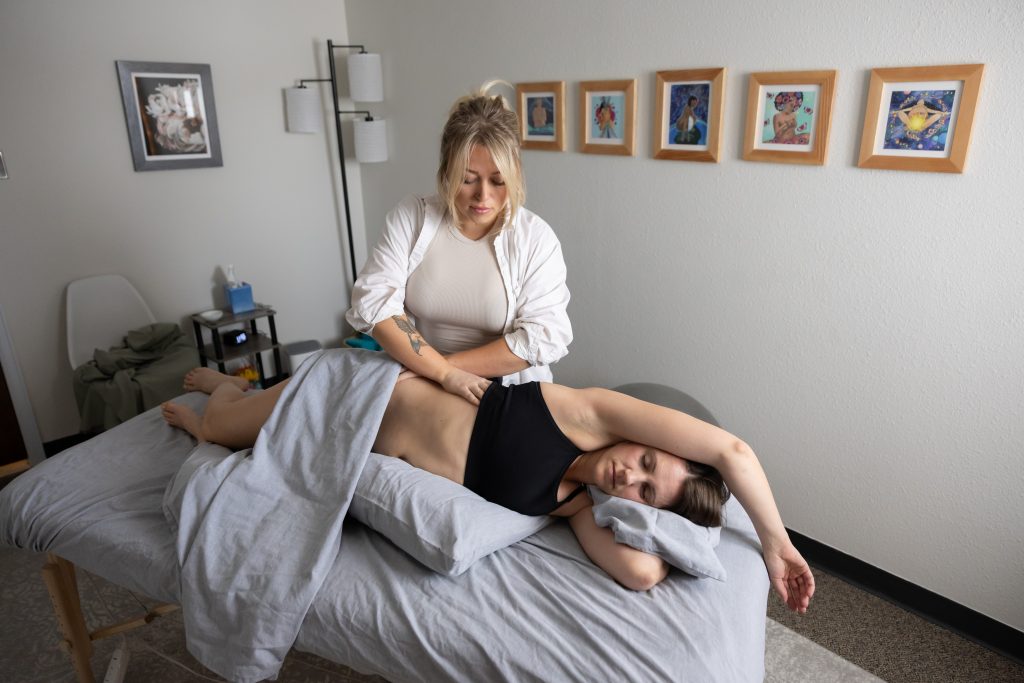- mamajanemassage
- Nov, 04, 2022
- Mama Jane Massage, Myofascial Release, Pain Management, Postpartum Massage, Prenatal Massage, Self-care, Womb Health
- Comments Off on Myofascial Release with Quinn

Myofascial Release by Quinn Cleland
Myofascial Release (MFR) focuses on releasing muscle shortness and tightness, getting to the root of chronic pain. Although often overlooked, fascia is the only full body system that exists and it is very integral to how we feel in our bodies. A movable connective tissue that looks like a silky spider web, fascia surrounds and infuses every organ, muscle, bone, nerve, and blood vessel all the way down to its cellular level. It supports and protects the structures of the body by creating a separation and space between organs, bones, and muscles so that fluids and nerves can pass through your body.
When our bodies experience inflammation, poor posture, illness, physical, mental and/or emotional trauma (broken bones, motor vehicle accidents, whiplash, sports injuries, abusive relationships, high stress jobs, giving birth, etc.), fascia solidifies and shortens, becoming sticky and immobile. This causes the fascia to pull on the whole body system, causing pain and imbalance in completely different areas of the body.
The MFR approach on the body is gentle, unhurried, and without force. MFR is a method of “going inside” and listening to the body through the connective tissues. MFR is individualized care, a whole body treatment tailored specifically to you. It often releases tension you didn’t even know you were carrying. Slow movement and stretching on the skin loosens years of tension and allows the body to come to a more restored and balanced state.
MFR at Mama Jane Massage:
MFR & fertility:
We see many clients who experience difficulty conceiving who benefit from abdominal bodywork that increases blood, lymph and nerve flow to the pelvic area. Misalignment of the pelvic organs, stress, trauma, abdominal surgeries, scar tissue, endometriosis, PCOS, inflammation and more can cause fascial restrictions around the uterus, fallopian tubes and ovaries. MFR can help to release these pelvic fascial blockages and restrictions, creating even more blood, lymph and nerve flow throughout the pelvic area, which could lead to success in conceiving.
MFR & pregnancy:
As you get further along in pregnancy, your growing baby pushes your organs out of the way to make space, changes your center of gravity and impacts your gait and posture. If the client already has fascial restrictions in their body, fascia will pull more as the baby grows, causing pain in the back, pelvis, ribs, and elsewhere throughout the body. The facial pull can also cause digestive problems and difficulty breathing due to fascial restrictions around the ribs, diaphragm and organs. Through MFR, the connective tissue is stretched and released to make more room in your uterus for baby, decrease pain, increase mobility, and facilitate deep breathing. This is done on the back, ribs and pelvis and not the belly.
MFR & postpartum:
MFR on the pelvis and sacrum can be very beneficial for postpartum recovery after a vaginal or Cesarean birth. Birth can create an inflammatory response in the pelvis, causing fascia to tighten; this can lead to pelvic dysfunction, constipation, urinary issues and headaches. Breast/chest-feeding, holding babies, sleep deprivation, and stress cause fascia to tighten elsewhere in the body, as well. MFR supports pain relief for all of these areas, and also emotional relief during this tender time.
Additionally, for those who had a Cesarean birth, doing MFR on your incision may speed healing and reduce scar tissue.
What to expect in a session:
In a full MFR session, I will start by doing a postural analysis to check for any areas that are unbalanced and get a feel for where restrictions are and where they began. Please bring or wear underwear and bra or loose tank top and shorts for the postural analysis. This only takes 3-5 minutes. If you’ve booked a full session of MFR, you will lay on the table in your loose tank top and shorts/bra and underwear. If you’ve booked a combo session with massage and MFR, we will still do the postural analysis but afterwards you will get undressed and under the sheets as you would for a massage.
No lotion or oils are used during MFR as it’s a barrier between my skin and yours, and it decreases my ability to sink into the fascia. You can expect to feel really relaxed during your session. Sometimes emotions or visions will surface or you’ll feel the urge to move a limb, laugh, cry, or take a deep breath. That’s normal and okay! Your body is just releasing and we are in a safe space for that.
Unlike a traditional massage, during an MFR session I apply pressure and pull in different areas, and follow what the body is telling me. It’s great when you communicate what you’re feeling during the session, but you don’t have to. Some people are sore the next day as if they received a deep tissue massage. Sometimes people feel a huge relief or difficult memories can be brought up. Each experience is unique and valid. We each deserve to let go of what’s hurting us.
MFR sessions with Quinn are available for 60 ($100) or 90 ($130) minutes – Schedule your appointment HERE








